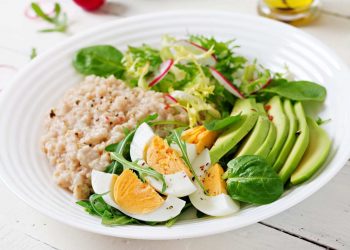7 Ways Bones Density Superfoods Boost Bone Health
Bones density superfoods are the foods that feed your skeleton — dense, mineral-rich ingredients that help build strength, reduce fracture risk, and keep you moving with confidence. They matter because your bones are the scaffolding of your life; when they weaken, everything else feels fragile. You want food that works as hard as you do. This guide shows seven clear, science-backed ways these foods help your bones, and how to add them to your plate without fuss.
Bold, practical, and honest: that’s how I talk about food that heals. I’ve seen women swap fear for power when they choose the right nutrients. Let me walk you through the evidence, the taste, and the real-life ways to make bones density superfoods part of your daily rhythm.
Contents
- Bones Density Superfoods That Transform Your Bones
- How To Build A Weekly Plate Around Bones Density Superfoods
- Signs You Should Prioritize Bones Density Superfoods Now
- Bottom Line
- FAQ
Bones Density Superfoods That Transform Your Bones
Start with calcium-rich champions. Milk, yogurt, and cheese are classic, but don’t stop there. Sardines with bones, canned salmon, tofu set with calcium, and dark leafy greens are heavy hitters. A landmark review in Clinical Reviews in Bone and Mineral Metabolism shows dietary calcium supports bone mass when paired with vitamin D, and that combination is the backbone of bone health.
When you pick these foods, you’re giving your body the raw material for bone formation. Think of calcium as the bricks and vitamin D as the mason. Without both, you’re building houses with empty boxes.
1. Increase Bone Mineral Density With Calcium-Rich Foods
Calcium is non-negotiable. Your bones store most of your body’s calcium, and when intake is low, your body borrows from the bank. That leads to lower bone mineral density over time.
Make it simple: aim for servings of calcium at each meal. Greek yogurt at breakfast. A salad with cooked kale and sesame seeds for lunch. A salmon dinner. If you’re dairy-free, choose fortified plant milks and tofu. Small, consistent changes beat grand, short-lived plans.
2. Boost Calcium Uptake With Vitamin D–Rich Choices
Vitamin D isn’t a trend. It unlocks calcium absorption. Fatty fish, egg yolks, and mushrooms exposed to sunlight are practical vitamin D sources. A pooled analysis in the Journal of Clinical Endocrinology & Metabolism found that vitamin D supplementation reduces fracture risk in adults with low levels.
If sunlight is scarce for you, pair bones density superfoods with fortified foods or discuss supplements with your clinician. This is one time when checking a blood level matters.
3. Strengthen Bone Structure With Protein-Packed Foods
Protein builds more than muscle. It helps bone matrix formation. Lean meats, legumes, dairy, and nuts are your allies. Research from the American Journal of Clinical Nutrition indicates that higher protein intake supports bone health, especially when calcium is adequate.
Don’t fear protein if you have osteoporosis concerns. It’s a partner, not a villain. Combine protein with calcium-rich choices to fortify your bones and your day.
4. Add Magnesium-Rich Fare For Balanced Bone Health
Magnesium helps regulate calcium and vitamin D metabolism. Nuts, seeds, whole grains, and leafy greens deliver magnesium without drama. Studies published in Nutrients highlight that magnesium intake correlates with bone density and lower fracture risk.
Make magnesium part of the mix by swapping white bread for whole grain, adding pumpkin seeds to yogurt, and enjoying a handful of almonds as a snack.
5. Embrace Vitamin K2 Foods To Direct Calcium Where It Belongs
Vitamin K2 helps shuttle calcium into bone and away from arteries. Fermented foods like natto and high-fat cheeses are natural sources. Observational studies and mechanistic research suggest vitamin K2 improves bone strength and may reduce arterial calcification — a two-bird benefit.
If fermented foods aren’t your style, small, steady additions make a real difference over time. A serving of kefir, a smear of aged cheese, or an occasional plate of natto if you’re adventurous will do it.
6. Fight Inflammation With Anti-Inflammatory Superfoods
Chronic inflammation eats away at bone. Berries, fatty fish, olive oil, and colorful vegetables pack anti-inflammatory compounds that protect bone remodeling. The American Journal of Clinical Nutrition points to omega-3s as supportive for bone health, particularly in older adults.
Cook with extra virgin olive oil. Add berries to your oatmeal. Enjoy wild salmon a couple of times a week. These moves reduce subtle inflammation and protect your skeleton.
7. Support Bone Remodeling With Trace Minerals And Collagen-Boosting Foods
Zinc, copper, boron, and silica matter, too. Shellfish, nuts, legumes, prunes, and whole grains supply these trace minerals. Collagen-rich broths and vitamin C–rich citrus help maintain the protein framework of bone. Research in the Journal of Nutrition reveals that trace minerals influence bone quality beyond density numbers.
You don’t need an exotic pantry. Simple additions — a lemon in your water, a bowl of bone broth, a few prunes with yogurt — layer benefits that add up.
How To Build A Weekly Plate Around Bones Density Superfoods
Structure matters more than perfection. Plan three simple swaps that you can keep: swap orange juice for fortified plant milk, replace one snack with a yogurt-and-seed bowl, and have two fish dinners per week. These moves are sustainable and powerful.
Here’s a week sample:
- Monday: Greek yogurt with pumpkin seeds and berries.
- Wednesday: Tofu stir-fry with bok choy and sesame.
- Friday: Canned salmon on whole-grain toast with a side salad.
These meals weave in calcium, vitamin D, protein, magnesium, and healthy fats — the complete bones density superfoods package.
Practical Tips To Make These Foods Stick
Start small. Shop for one new ingredient each week. Prep in batches. Freeze portions. Use flavored yogurts, citrus, or spices to make foods feel like treats instead of medicine.
If you travel, pack shelf-stable options: canned fish, nuts, and fortified cereal can be lifesavers. When you’re busy, a smoothie with fortified milk, spinach, and a scoop of collagen or Greek yogurt gives quick nutrition.
What The Research And Experts Say
Leading institutions emphasize diet as a cornerstone for bone health. The National Institutes of Health provides guidelines for calcium and vitamin D intake and highlights the role of diet and lifestyle. Harvard’s T.H. Chan School of Public Health outlines practical food sources and underscores the combination of nutrients necessary for strong bones.
Clinicians and dietitians recommend personalized plans, especially for those with low bone density or osteoporosis. Blood tests for vitamin D and discussions about supplements can tailor your approach.
Signs You Should Prioritize Bones Density Superfoods Now
You should pay attention if you’ve hit menopause, had low-trauma fractures, or follow a restrictive diet. These are times when bone loss speeds up and food becomes an accessible intervention.
Other signs: persistent back pain, shrinking height, or a family history of osteoporosis. Don’t let embarrassment delay action. Nutrition is the kind friend who quietly rebuilds what time and stress have eroded.
Bottom Line
Bones density superfoods give you more than a number on a scan. They give you the freedom to bend, lift, walk, and dance without fear. Focus on calcium, vitamin D, protein, magnesium, vitamin K2, anti-inflammatory foods, and trace minerals. Make small, consistent swaps and lean on whole foods that taste like life, not a prescription. Your bones will thank you with strength, resilience, and quiet endurance.
Be bold. Start with one meal today and build from there. Small choices make a solid foundation.
FAQ
What Are The Best Daily Sources Of Calcium?
Dairy like milk and yogurt, canned salmon with bones, tofu set with calcium, and dark leafy greens like kale are top picks. Fortified plant milks also help if you avoid dairy.
Can I Get Enough Vitamin D From Food Alone?
It’s possible but often challenging. Fatty fish, egg yolks, and fortified foods help, but many people need sunlight or a supplement, especially in winter. Check a blood test to know for sure.
Are Supplements Necessary If I Eat Well?
Not always. Whole foods are best, but supplements can fill gaps — particularly vitamin D or calcium when intake is low. Discuss supplements with your healthcare provider for a plan tailored to your needs.
Do Plant-Based Diets Support Bone Health?
Yes, when planned. Include fortified milks, legumes, tofu, nuts, seeds, whole grains, and plenty of leafy greens. Watch protein and calcium intake and consider vitamin D monitoring.
How Long Before I See Benefits From Changing My Diet?
You may notice more energy and less joint stiffness in weeks; measurable changes in bone density take longer, often a year or more. The key is consistency.
References
National Institutes of Health provides dietary guidance and recommendations for calcium and vitamin D and is a reliable resource for bone health information (http://ods.od.nih.gov).
Harvard T.H. Chan School of Public Health offers practical advice on bone-friendly foods and the science behind nutrients that support bone health (https://www.hsph.harvard.edu/nutritionsource).
The Journal of Clinical Endocrinology & Metabolism published research on vitamin D and fracture risk and supplies clinical context for supplementation strategies (https://academic.oup.com/jcem).
The American Journal of Clinical Nutrition has studies linking protein intake to bone health and offers evidence-based recommendations (https://academic.oup.com/ajcn).
The National Osteoporosis Foundation provides resources for prevention, diagnosis, and treatment of osteoporosis and supports dietary strategies for bone health (https://www.nof.org).
Get Your FREE Natural Health Guide!
Subscribe now and receive our exclusive ebook packed with natural health tips, practical wellness advice, and easy lifestyle changes — delivered straight to your inbox.















